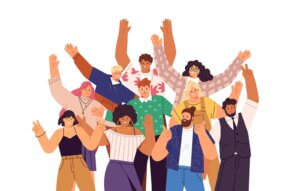Is it me?
October 26, 2021

I want to take a slight departure from my usual marketing tips this week and address an issue creating havoc in just about every business in the country. It affects your capacity to serve your customers, the opportunity to go after new prospects, and ultimately your ability to stay in business.
I know of very few businesses that are not being rocked by turnover right now. Many of the businesses we work with have experienced 50-60-75% turnover since the last
fourth quarter. This is not an isolated incident at your company.
This is a COVID-caused phenomenon.
Economists are calling this the “Great Resignation.” The number of employees leaving their employers for new opportunities is at its highest level in more than two decades.
When I look at the departures happening across all industries and businesses of all sizes, they’re very different from what we typically see. What we are witnessing is another casualty of COVID. All of us were affected by the last 18 months, but for some people the effects were so profound and so personal that they are making radical choices.
The departures we’re seeing now are much more about life choices than career choices.
Think about the people who have left your organization. In most cases, they didn’t just trade up jobs and go to one of your competitors. They’re going back to school or moving closer to family, or choosing to work for a nonprofit. They’re taking a “safe” job. They’re staying home to raise their kids. But in most cases, it is far less a strategic career move. It is a survival tactic.
This is about people being afraid, or in some cases about them needing to make a dramatic change in their life to feel as though they’re taking back the control that COVID stole from them. And for others, it’s needing to be closer to family no matter the cost.
This is way bigger than us. This is a long-term effect of COVID.
What does that mean for us, from a marketing perspective? Internally, we must be mindful of two key components: How are we handling the departures, and how are we taking care of the people we still have?
In terms of handling the departures, this is a time for grace and understanding. Again, the folks who are leaving us need to go. And our people are watching how we embrace that idea. We also need to remember that this may be a temporary situation. They might just need a respite and eventually want to come back.
We’re also going to need to be a bit of a cheerleader. It’s frightening to see a good portion of your co-workers walk out the door. Your current team needs reassurance that they’re not going to have to bear the increased workload, that you’re working to recruit replacements, but most of all, that the opportunities and culture that drew them to your organization are still there.
This is also the time for us to be even more committed to our employees’ well-being. It’s fair to say that everyone is dealing with some remnants of COVID. It might be child care or parental health issues. It could be a fear of being indoors with a lot of people. It might even be undefinable, but it’s there.
Investing in our company’s culture and values right now feels like a smart play. I’m not talking about another party or potluck, but really doing the work to live up to the values that are on your wall. What better way to unite your employees and give them a reason to stay?
Now more than ever, our employees need our stability, our compassion and our commitment.
Next week, we’ll cover the external communication we need to be thoughtfully preparing.
This was originally published in the Des Moines Business Record, as one of Drew’s weekly columns.
More







